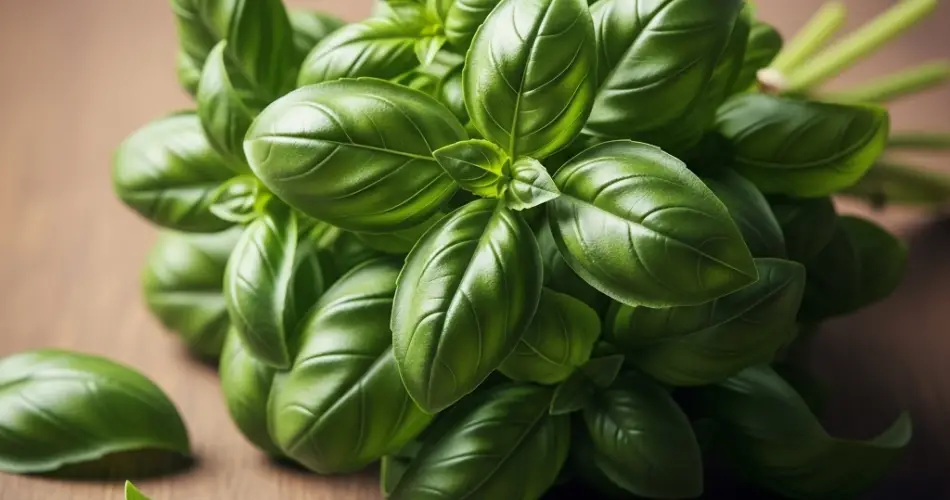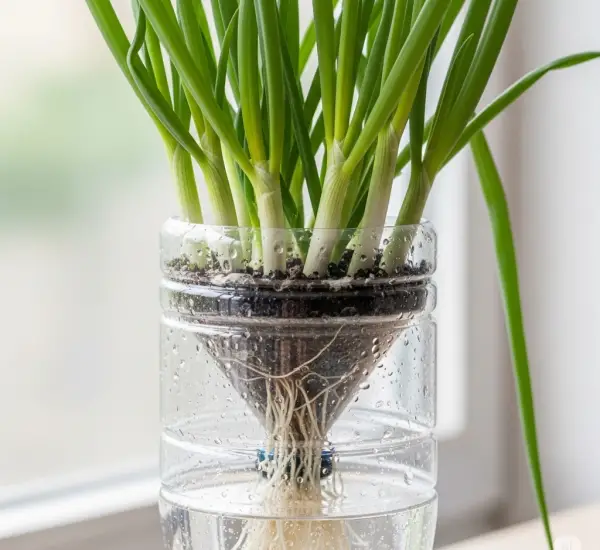Fresh basil is a favorite herb in many kitchens, prized for its bright aroma and bold flavor. However, it doesn’t last long after harvest. Whether you’ve grown a big basil crop in your garden or picked up a large bunch at the market, preserving it properly ensures you can enjoy its flavor all year round. Fortunately, there are several effective ways to store basil without losing its vibrant taste and fragrance.
1. Storing Basil Fresh in Water
One of the simplest methods to keep basil fresh for up to a week is by placing the stems in a jar of water—just like a bouquet of flowers.
How to do it:
-
Trim the ends of the basil stems.
-
Place the bunch in a glass of water, ensuring only the stems are submerged.
-
Keep the jar on your kitchen counter, away from direct sunlight.
-
Cover the basil loosely with a plastic bag to help maintain humidity.
-
Change the water every 2–3 days.
Avoid refrigerating the jar, as basil leaves can blacken and wilt in the cold.
2. Refrigerating Basil with a Damp Paper Towel
If you need to refrigerate basil for a few days, this method can help reduce wilting and preserve flavor.
Steps:
-
Gently wash and dry the basil leaves.
-
Wrap them loosely in a slightly damp paper towel.
-
Place the bundle in a plastic zip-top bag or an airtight container.
-
Store it in the crisper drawer of your refrigerator.
Check the towel regularly and re-dampen if necessary. Basil will usually stay fresh for up to 4–5 days this way.
3. Freezing Basil Leaves
Freezing is one of the best long-term preservation methods, and frozen basil works well in soups, sauces, and stews.
Option A: Freeze Whole Leaves
-
Wash and dry fresh basil leaves thoroughly.
-
Spread them on a baking sheet and freeze for 1–2 hours.
-
Transfer the frozen leaves into an airtight freezer bag.
-
Store in the freezer for up to 6 months.
Option B: Freeze Chopped Basil in Ice Cubes
-
Chop fresh basil or blend it with a small amount of olive oil or water.
-
Spoon the mixture into ice cube trays.
-
Freeze until solid, then transfer cubes into labeled freezer bags.
These cubes are great to toss into pasta, soups, or any dish needing a quick hit of basil flavor.
4. Making Basil Pesto for Freezing
Pesto is a delicious and practical way to preserve a large amount of basil. Homemade pesto freezes well and can be used later in pasta dishes, sandwiches, or dressings.
Basic pesto recipe:
-
2 cups fresh basil leaves (washed and dried)
-
½ cup olive oil
-
⅓ cup pine nuts (or walnuts)
-
2–3 garlic cloves
-
½ cup grated Parmesan cheese
-
Salt and pepper to taste
Blend all ingredients in a food processor until smooth. Spoon into ice cube trays or small containers. Once frozen, transfer to freezer bags and store for up to 6 months.
If you want to freeze pesto without cheese, simply omit it and stir in grated cheese when you’re ready to use the thawed pesto.
5. Drying Basil
Drying basil is an old-school but effective method. While some of the flavor is lost during drying, dried basil is perfect for seasoning sauces and meats.
Air-Drying Method:
-
Harvest basil stems before they flower.
-
Tie small bunches together with twine and hang upside down in a warm, dry, and dark place with good air circulation.
-
Leave to dry for about 1–2 weeks, or until the leaves are crispy.
-
Strip the dried leaves from the stems and store them in airtight jars away from sunlight.
Oven-Drying Method:
-
Preheat your oven to the lowest setting (ideally 95°F to 115°F or around 35°C–46°C).
-
Place basil leaves in a single layer on a baking sheet lined with parchment.
-
Dry in the oven for 1–2 hours, keeping the oven door slightly open.
-
Check regularly to avoid burning.
Once dried, crumble the leaves and store in airtight containers.
6. Basil-Infused Oil
You can infuse olive oil with basil for a flavored oil that lasts several weeks in the fridge.
How to make:
-
Blanch basil leaves briefly in boiling water, then transfer to ice water to preserve color.
-
Dry the leaves thoroughly.
-
Blend with olive oil (about 1 cup oil per cup of basil).
-
Strain and pour into a sterilized bottle.
-
Store in the refrigerator and use within 1–2 weeks.
Note: Infused oils must be refrigerated to prevent the risk of botulism. Never store basil oil at room temperature.
Final Tips
-
Always wash basil gently and dry thoroughly before preserving.
-
Label your containers with the date and contents for easy use later.
-
Choose a preservation method based on how you plan to use the basil—frozen for cooking, dried for seasoning, or fresh for short-term use.
With these easy preservation techniques, you can enjoy the flavor of fresh basil long after the growing season ends. Whether you freeze it in cubes, dry it for spice jars, or turn it into pesto, there’s a method to suit every kitchen.



